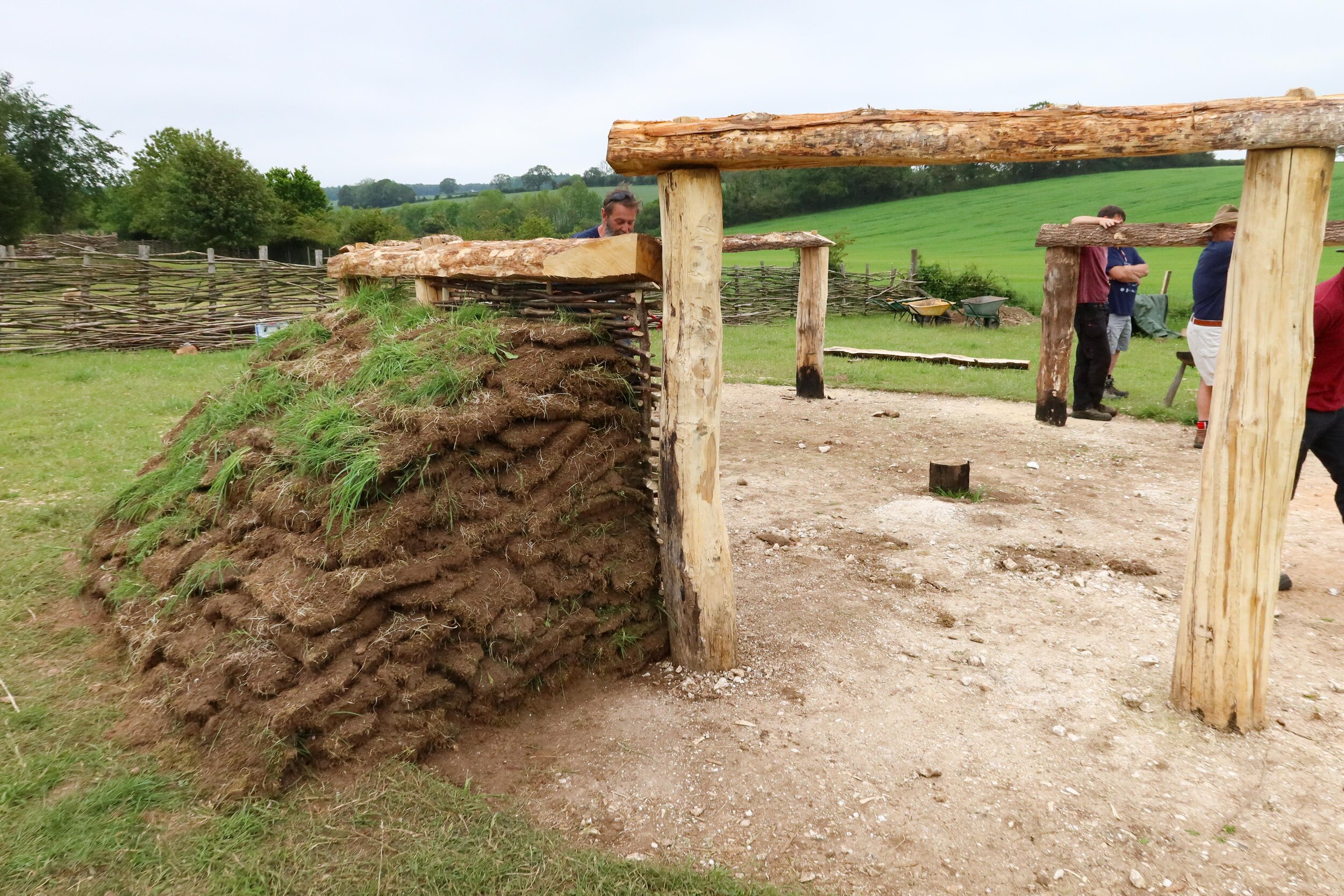Session 4 of our Bronze Age build with Operation Nightingale and Projects Co-ordinator Trevor updates us on the latest progress - featuring turf walls, figurine carving and pottery.
We have been really fortunate in the way our Bronze Age project has unfolded to date. Not only do we have an exceptional team working on the build, we have also had exceptional weather. Session four, on the 9th, 10th and 11th of June, carried on in like fashion. Beautiful, warm (finally) days welcomed our crack team to tackle what was probably our most ambitious three days yet. On the Wednesday and Thursday, half of the crew carried on where we left off the previous session, splitting logs and making lintels. As if that wasn't enough, they also tackled the building the first phase of our earth walls. Working with Butser's other projects co-ordinator, Sue, they built about two metres of earth wall using the turf that was stripped when the site was cleared. The results caused a flurry of excitement, at least among the experimentally-inclined, as very few experimental roundhouses are built with earth walls. That's despite the fact that many archaeologists think that earth walled buildings were common in prehistoric Britain. Unfortunately, as is the way with experimental archaeology, we won't be able to fully test that theory until the building is demolished and we can compare what's left with original archaeology – and hopefully that won't happen any time soon!
The other half of the team immersed themselves in Bronze Age craft activities.
Operation Nightingale stalwart Richard Osgood was on hand to guide his half of the team through the basics of wood carving. The objective was for everyone to create their own version of one of the Roos Carr figures. Roos Carr is a site near Hull where a group of figurines carved from yew were discovered in 1836. They were a bit of a mystery for many years but we now know that they date from around the late Bronze Age. At the risk of sounding like a captive of the modern world's obsession with machine-made 'perfection', I would describe the figures as fairly crudely carved and, if I'm honest, a little scary to look at!
They are actually made from a number of articulated parts. At between 35 – 40 cm, the head, torso and legs are the largest piece of each figurine. Each contains carved sockets, into which are fitted ... let's call them appendages. Some are arms, the others identify most of the figurines as unambiguously male. The figures also have pebbles glued on as eyes, so the team went on a bit of a rock-hunting expedition to source some nice white pebbles and mixed up a brew of pine resin, beeswax and charcoal to give their carvings their ocular necessities. As well as being a fun project, Richard and his crew have created a group of artefacts that we can use to decorate our roundhouse and to illustrate to visitors some of the craft aspects of Bronze Age Britain. Of course, we don't know what the figures were for, not do we know whether or not Bronze Age people decorated their houses. What we do know is that the Bronze Age had a rich material culture – archaeologists have found beautifully crafted objects, from jewellery to weapons. Although organic materials like wood are rare survivors, it's a reasonable bet that it was used for all sorts of things – for spiritual objects, decorative and functional pieces and more. In fact, one of the original Roos Carr figures was taken home by one of the workmen who found it and given to his daughter as a doll to play with – so it might even have been a child's toy in Bronze Age (that figure found its way to the Literary and Philosophical Society and eventually became part of the collections of Hull Museums in 1902 – 80 years later! I would love to know the back story there). The great thing about having objects like the Roos Carr figures (and we will have more arts and crafts to come) is that it allows us to engage visitors in speculation about their use.
Ironically, one of the aspects of archaeology that is most exciting are those bits we don't understand – and that's almost all of it. Through these very human objects we can all engage in a bit of musing about their purpose. They help us engage with the humans who made them in ways that are perhaps even more intimate than structures like houses. We can all speculate about their original purpose – they might have been deeply spiritually significant but, equally, they may have had a much more light-hearted purpose. Your guess really is a good as anyone's and connecting with objects like this makes us all archaeologists! The original Roos Carr figures are now on display in the Hull Museum and, if you can't get to Hull, they are well worth a Google search.
Our Friday session was given over entirely to another Bronze Age craft – pottery. Our very own pottery guy, Phelim McIntyre, was on hand to give a team of 10 enthusiastic potters-in-the-making a prehistoric version of the Great Pottery Throwdown. Well, not quite – the potter's wheel wasn't introduced until more than a thousand years after our roundhouse was built. So it was more a question of the great pottery build up, where lumps, slabs or coils of clay are built into a vessel or some other piece, ready for firing (not to be outdone by the wood carvers, one ambitious potter created a clay Roos Carr figure).
From an archaeological perspective, pots are very important. Because of the happy conjunction of the facts that they can be reliably dated, their styles are often specific to a time and a place and they break very easily, pots (usually just broken bits, but sometimes you get lucky) are a great way to identify the who, what and where of an archaeological dig. Pots that once contained foods can sometimes also be analysed so that we can discover what people ate and drank (beer and cheese, for example).
Pots are so important in the Bronze Age that whole cultures have been named after them! The most famous in Britain are the 'Beaker People'. Their beaker shaped pots appear at the same time as bronze, so the Beaker People are really important to our story. Actually, it's rather more complex than that – arguments rage about whether or not the Beaker People were actually a group of people at all (to paraphrase the well-known archaeologist Francis Pryor, invaders armed with pots) or more a movement of ideas, which saw the spread of new cultural ways and technologies. Or a bit of both. Still, I won't let archaeological theory get in the way of a good story here. In our next session, Phelim and the team are going to fire the pots in a very Bronze Age pit firing (more to come). Makers were aghast when Phelim pointed out that, in the absence of a modern, temperature-controlled kiln, failure rates can be as high as 80%. This led to a frantic surge in an effort to make sure that the 20% was still a good collection. I guess the only comment I can make is 'well done potters'.
By the end of day three we had almost all of the lintels complete and fitted to their posts, 2 metres of turf wall completed, a number of Roos Carr figures ready to entertain and beguile our visitors with and an entire Beaker army of pots. Is there no stopping the Operation Nightingale team???
Amazing aerial shot of the Bronze Age build through a fish-eye lens by Harvey Mills.
To support our Bronze Age project with Operation Nightingale, and watch professionally produced documentary episodes about the project, subscribe to Butser Plus.
Thank you!
















